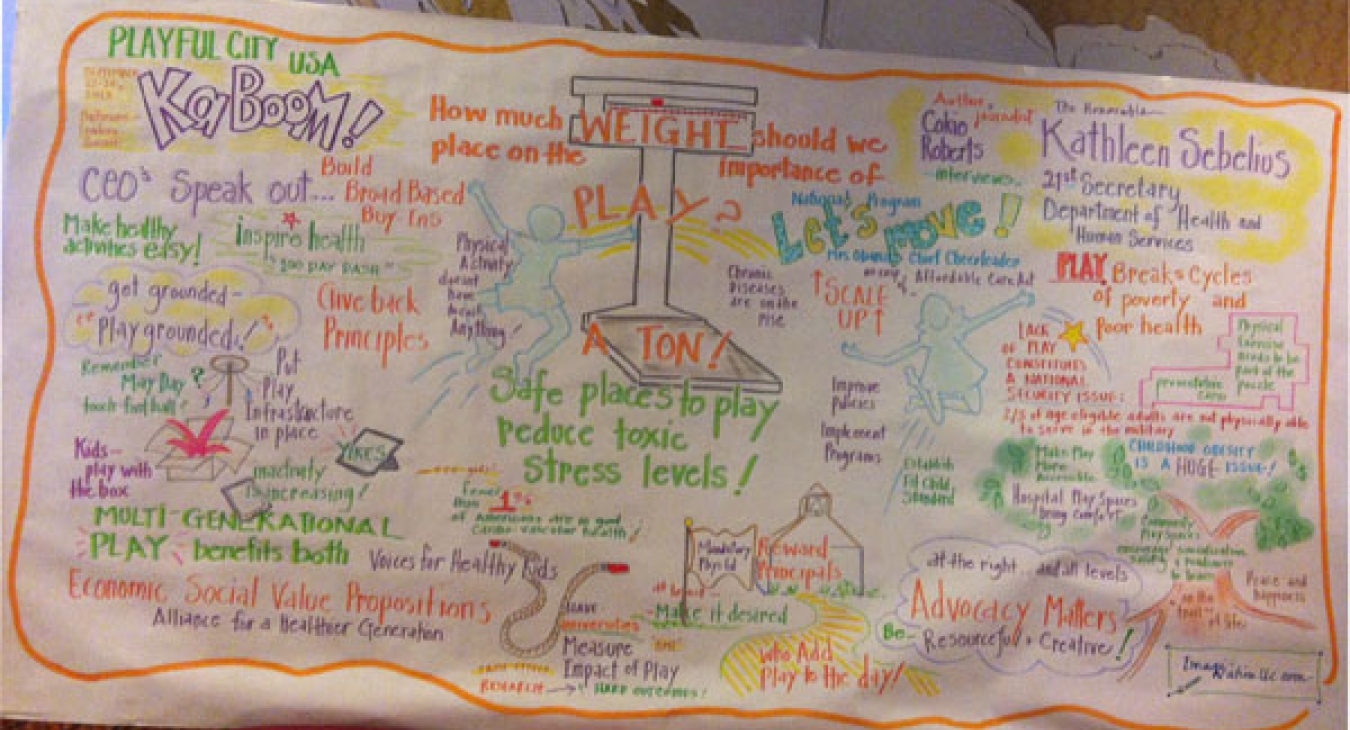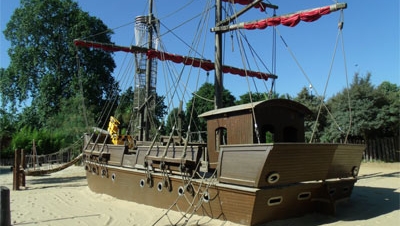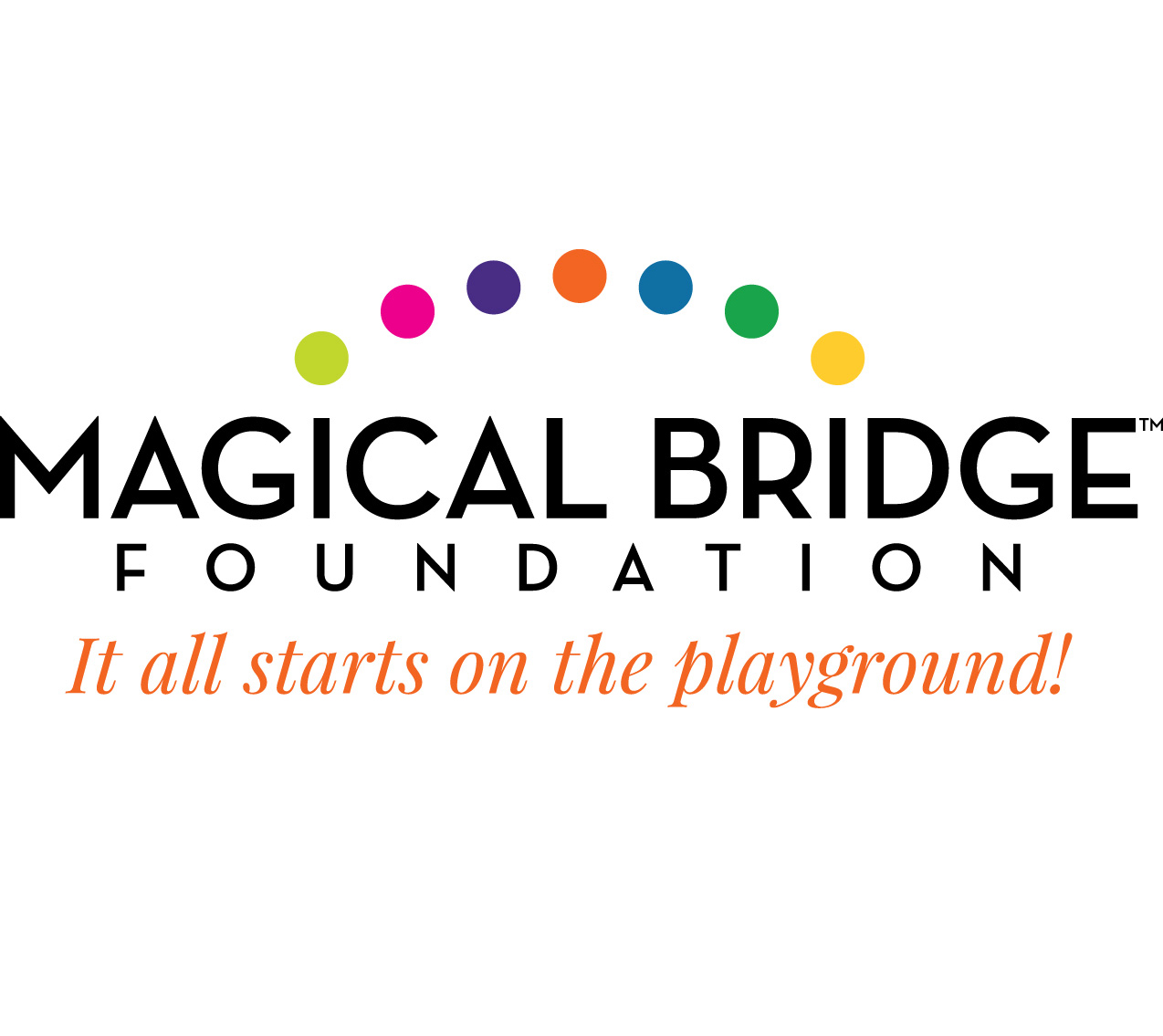“Ensuring Every Child Has the Childhood They Deserve”
For years KaBOOM! has talked about ensuring that every child in North America has a playground within walking distance of their home. While this still stands as an important goal, the KaBOOM! staff has spent the last year doing research and examining a broader goal. They are now taking the much bigger goal of “Ensuring Every Child has the Childhood they Deserve.”
One of the first efforts in making this happen was to bring together non-profit, foundation, business, and national thought leaders from across the countryto advance collective efforts to ensure that all children get the play that they need to become healthy and successful adults. I had the privilege to attend this first Playful Cities Leaders’ Summit. There were 200 invited attendees from over 50 cities in the United States.
Among the participants were 17 mayors who shared their thoughts. It was exciting to see the commitment cities are making to play. In addition, there were 11 city teams who are focused on improving the play opportunities in their communities. I am proud to say that my city of Pittsburgh had a huge contingent that is incredibly motivated to make a difference.
I want to share with you some of my learning and observations from the Summit.
Presenters at the summit shared many scary statistics. These statistics should make everyone stand up and say we must “Give Every Child the Childhood They Deserve!”
Kathleen Sebelius, Secretary of Health and Human Services, shared that the lack of play is a national security issue, since two-thirds of young adults are incapable of serving in the military due to health problems and obesity. Research has shown that play is one of the key solutions to our national obesity crisis.
She also shared that children today are living with incredibly high stress levels. Researchers call it toxic stress. Play is an antidote for stress.
According to Nancy Brown, CEO of the National Heart Association, the amount of time children are inactive has increased 13% over the last 3 years. She also shared that 27% of the children in the US have high blood pressure.
Sara Chumsky a marketing researcher from Insight Strategy Group told us that only 25% of children have access to a playground. This is significant because analysis based on data from the National Survey of Children’s Health (2007) indicate that children without neighborhood access to parks or playgrounds are 26 percent more likely to be obese and 23 percent more likely to be overweight than children with neighborhood access to parks or playgrounds.
We heard about how play is disappearing from our homes, our schools, and our communities. KaBOOM! has outlined the issue backed by a variety of research in a wonderful piece, called “Play Matters: Giving Kids the Childhood they Deserve.” I strongly encourage everyone involved in the playground industry to read it.
In addition to the problems, we heard about how play and play spaces impact our communities’ economics, health, security, pollution, tourism, and community cohesion.
We heard from Arne Duncan, the US Secretary for Education, on how play teaches children skills for a 21st century workforce.
We learned from the Trust for Public Land that building play spaces have the following impact:
- Air pollution decreases
- Water pollution decreases
- Tourism increases
- Property values increase
- Community cohesion increases so that people feel safer and volunteer more
- Health problems decrease
We also discussed solutions. One of the key concepts is the idea that great programs in isolation cannot be sustained nor solve the big picture. It is up to us to connect the dots—getting programs to work together.
Some of the important ideas to come out of the summit were:
Colocation and Collaboration— Arne Duncan wants us to use a school building and its grounds all day and all year. The facilities belong to the community, so why do we only use them a small portion of the time? The idea is: schools run them during school times, a Y or Boys and Girls Club run them before and after school, and a Parks and Rec program run them during the weekends and summers.
Use existing space creatively—Change boring school playgrounds into amazing nature learning and play areas like Denver Public Schools did with Learning Landscapes. They devote a portion of the area to gardening. The children sell their vegetables to be used in the school cafeteria and the money goes to maintaining their play space.
Use mapping and statistics to make your case—Washington DC mapped and rated all its playgrounds. They are using this information to prioritize new parks and improvement of parks. This effort is ensuring the kids in the poorest neighborhoods get places to play.
Repurpose things—Take 3 parking spaces and make them into a small play area. Take abandoned train tracks and make them into trails. Use recycled materials and build a play art installation.
Secure the support of the top leadership of a city—Mayor Rahm Emanuel of Chicago was honored for his comprehensive work to bring more play into Chicago. Thanks to his commitment, five years from now, every child in the city of Chicago will be within a seven-minute walk from a new park. In addition, he has worked with the schools to guarantee that every public elementary school student in the city gets a 45-minute lunch and recess.
All in all, it was an exciting two days to hear people committed to children and play from grassroots efforts all the way up to the goals of the President of the United States. It was great to reconnect and network with some of the best “Play People” in the country.
Spend a few minutes and watch KaBOOM!’s new video on play—I Believe in Play!











